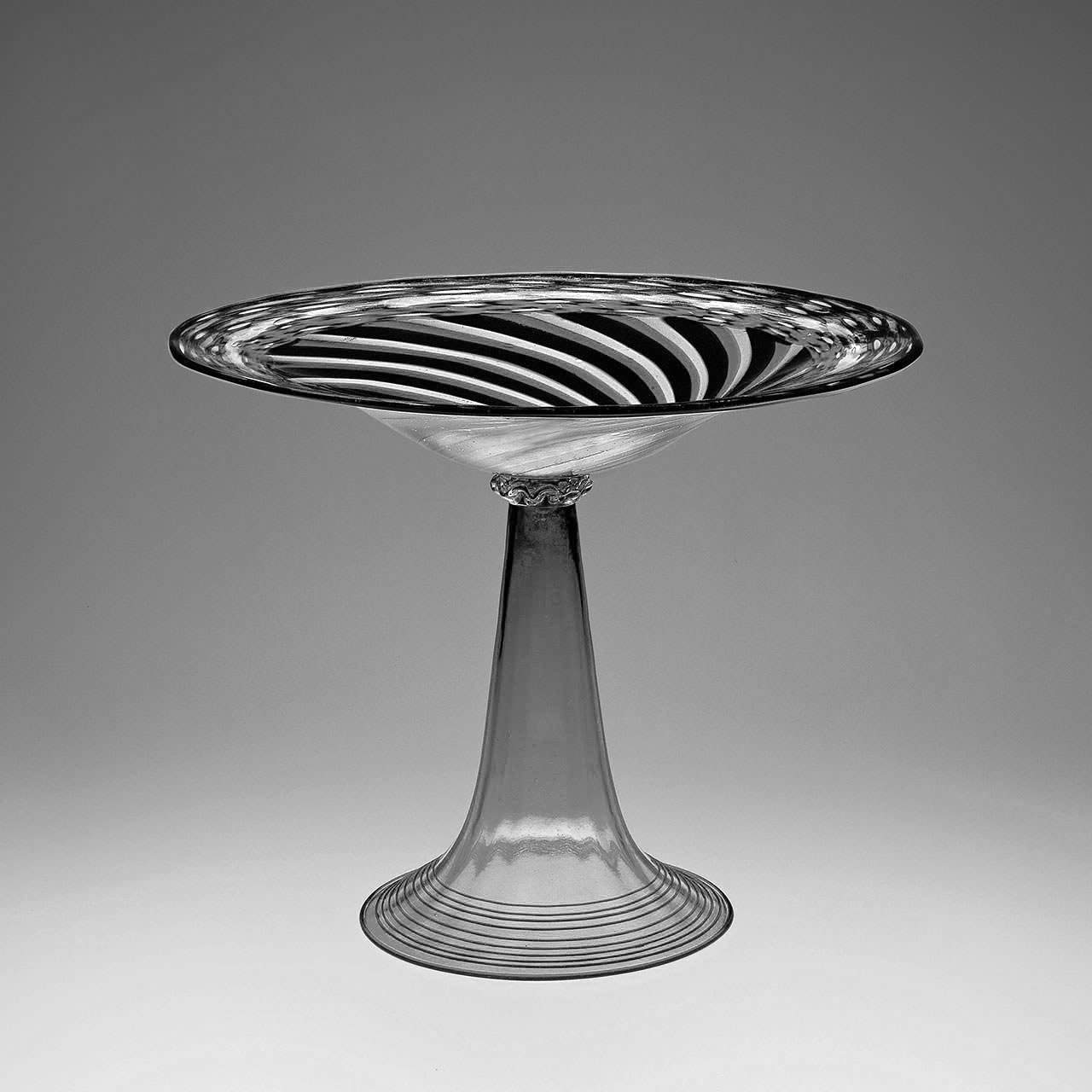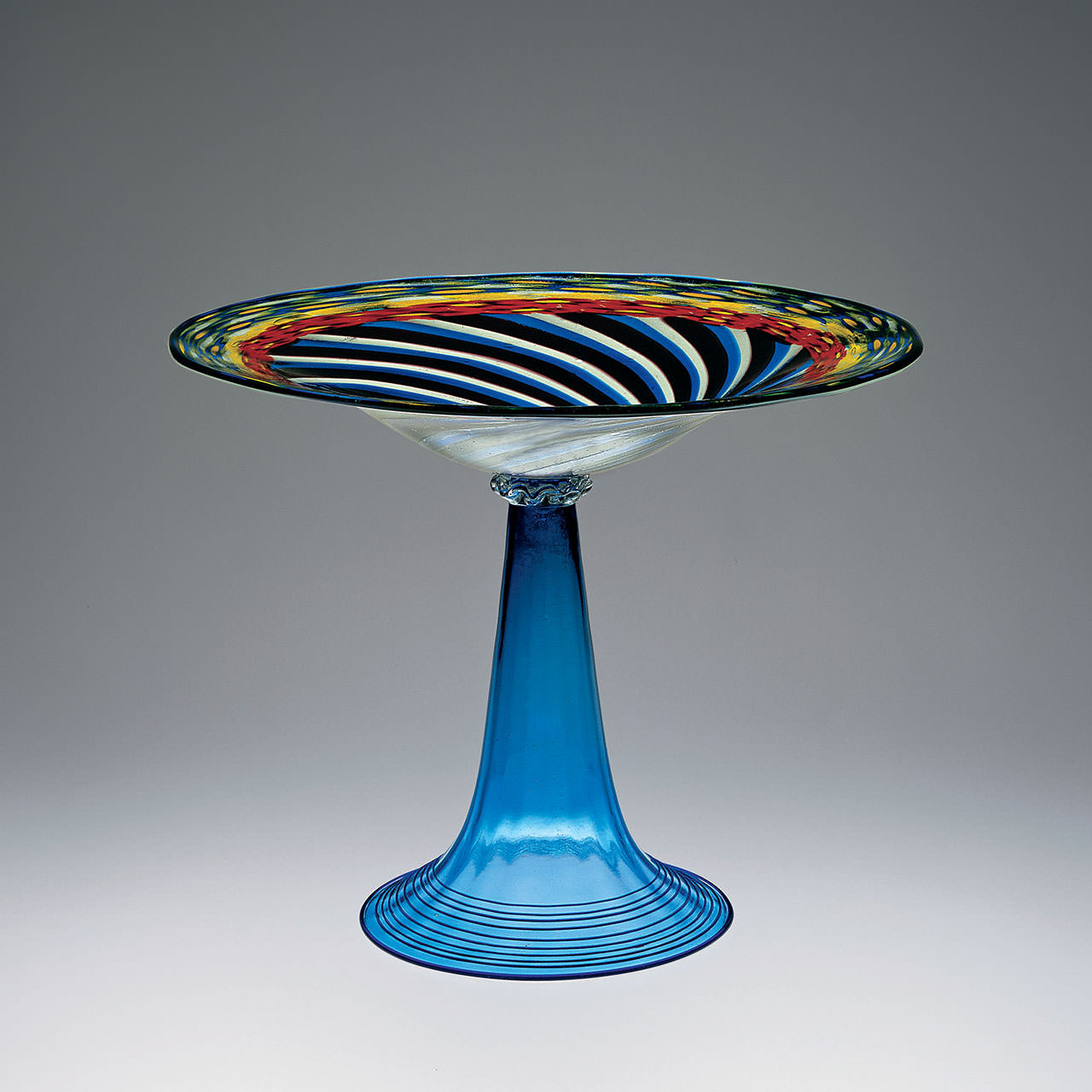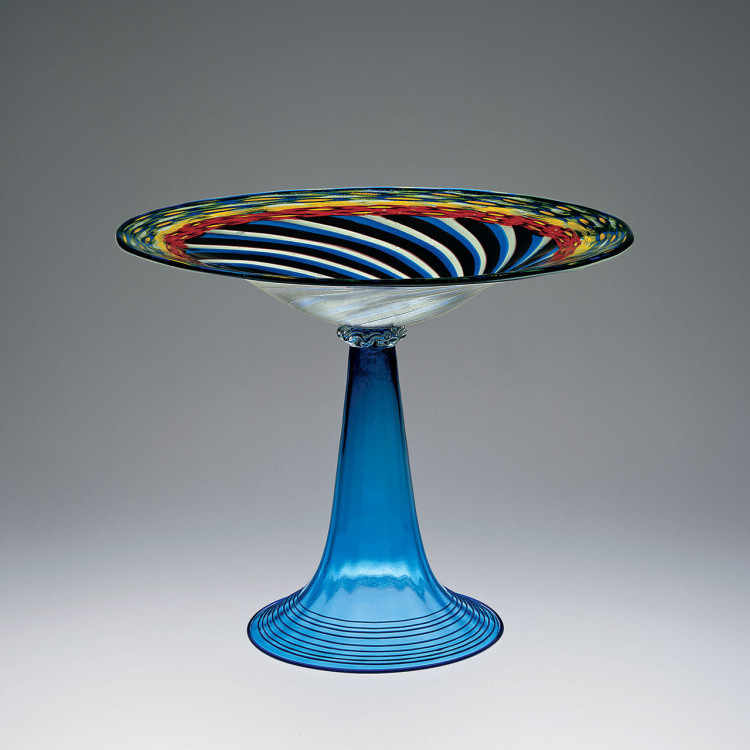
Artisti Barovier 1890–1919
Giovanni Barovier and his nephews Giuseppe, Benvenuto, and Benedetto worked as glassblowers at the Salviati dott. Antonio furnace, founded in 1877. In 1884, after Salviati’s departure, they acquired ownership of the company. On the basis of an agreement signed with Salviati, the company maintained its original name until Salviati’s death in 1890. It then changed its name to Artisti Barovier.
Under the guidance of Benvenuto and Giuseppe, the company reproduced the classical themes of nineteenth-century glass and soon achieved fame for the refinement of its production. Works executed later, particularly a murrine, were inspired by floral themes. The Artisti Barovier took several of these pieces to different exhibitions, including the Cà Pesaro (1908, 1909, 1913), where pieces designed by Zecchin and Wolf-Ferrari were also shown. During World War I, the furnace was temporarily moved to Livorno in Tuscany.
In 1919, the company name was changed to Vetreria Artistica Barovier and several new partners were added. Among them were Ercole Barovier and Nicolò Barovier, Benvenuto Barovier’s sons, and Giuseppe Barovier’s son Napoleone.

